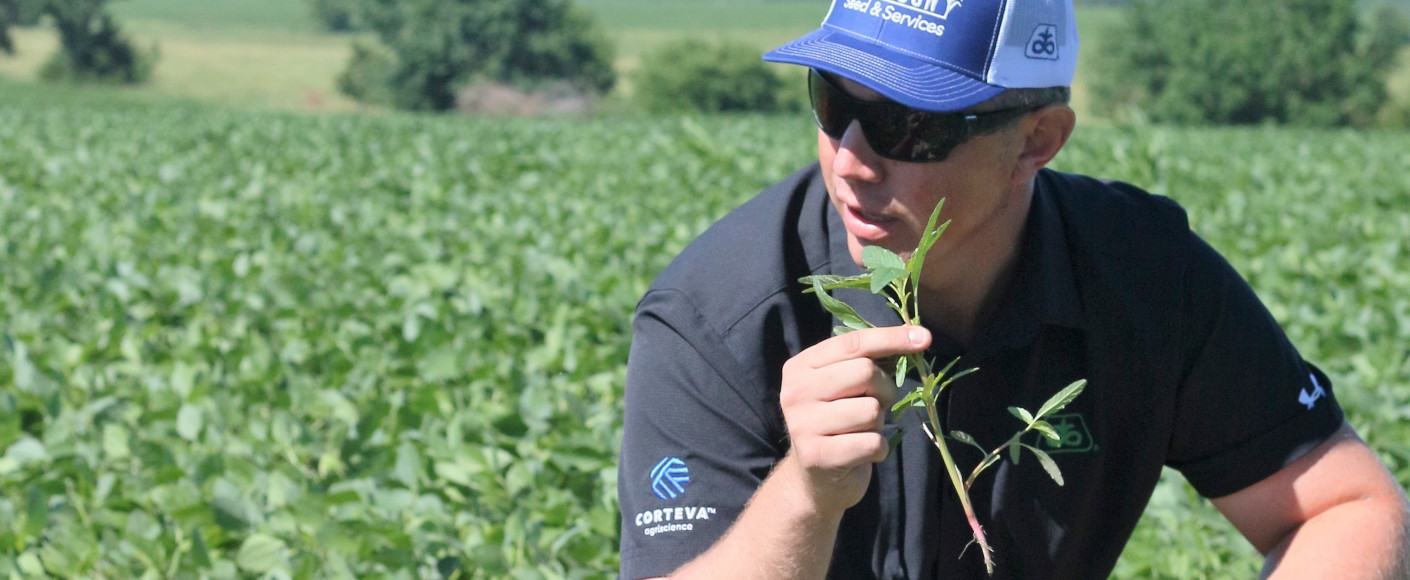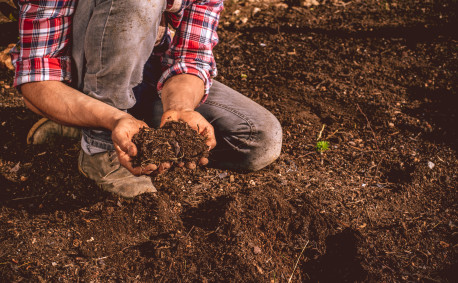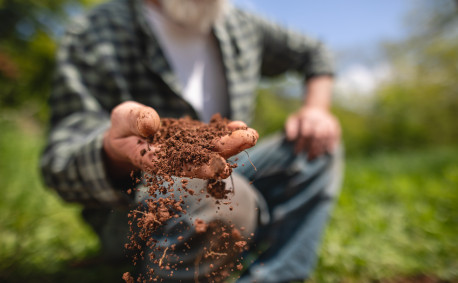The Plant Doctor Is In: Meet Jeremy Olson
There’s more to farming than just planting seeds and harvesting crops. Some people specialize in making highly scientific decisions between planting and harvest season to help crops thrive.
Meet Jeremy Olson, a farmer from Everest, who not only cares for his fields, but helps other farmers with theirs. Jeremy is an agronomist, an expert in soil science, and a Certified Crop Advisor with Pederson Seed and Services. In that role he helps his fellow farmers make the best decisions possible for their crops. You may be wondering, “What does an agronomist actually do?” Think of him as a plant doctor.
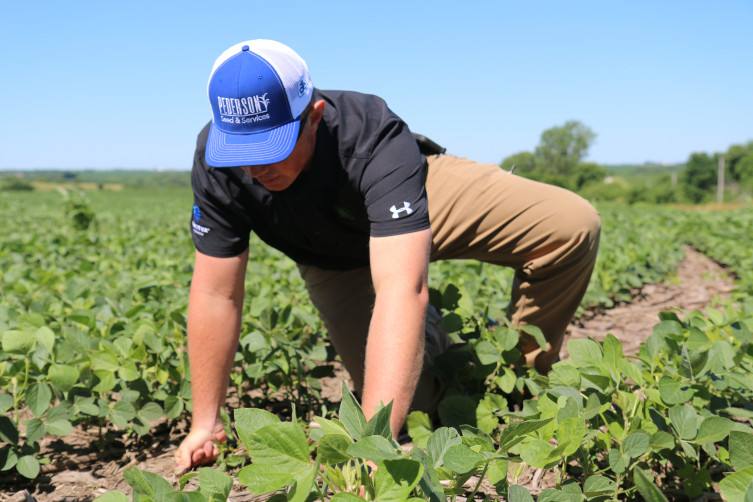 Before a crop is planted, farmers must decide what type of plant they want. If they live in an area that gets a lot of rain, they may want to go with a variety that can endure a lot of moisture. If they live in an area that is lucky to have any rain, they might want to go with a variety that is drought resistant. They might want to plant a variety that produces a short crop height or a taller crop height. Jeremy helps farmers make these complicated decisions.
Before a crop is planted, farmers must decide what type of plant they want. If they live in an area that gets a lot of rain, they may want to go with a variety that can endure a lot of moisture. If they live in an area that is lucky to have any rain, they might want to go with a variety that is drought resistant. They might want to plant a variety that produces a short crop height or a taller crop height. Jeremy helps farmers make these complicated decisions.
After the seeds are planted and the crop starts to sprout, Jeremy inspects the fields and advises farmers on how to best manage their crops depending on what he sees. For example, if he sees Japanese Beetles, which cause harm to plants by eating the leaves, in a soybean crop, he calculates the “economic threshold” of certain courses of action. The economic threshold is essentially the profitability of any given decision. The process involves determining the population of insects present (so in this case, estimating how many Japanese Beetles are in the field), as well as the extent of damage done. From there, Jeremy helps farmers determine if they should spray insecticide to protect the crop from being severely damaged by the beetle. He does this by estimating the potential profit to be made from spraying an insecticide and determines if it exceeds the cost of the insecticide. Each insect, weed, or disease has a unique set of factors that determine the next steps. If using pesticide is deemed the best way to proceed, there are many options to choose from. Agronomists are tasked with knowing all of these factors and combinations.
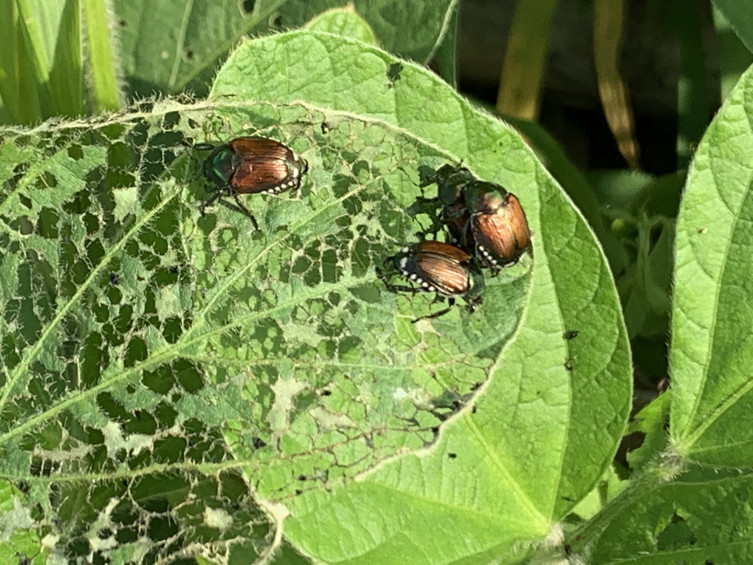 Just as a medical doctor has to have a vast knowledge of which symptoms come from which illnesses and which medicine would be the most effective treatment, Jeremy must have a deep knowledge to diagnose his patients — plants. But Jeremy has an added layer of difficulty. Unlike a medical doctor, he can’t simply ask his patients what their symptoms are. He must solely go off of what he observes. He has to understand growth and development, disease, prevention and treatment for a variety of plants, and make a diagnosis and treatment plan accordingly.
Just as a medical doctor has to have a vast knowledge of which symptoms come from which illnesses and which medicine would be the most effective treatment, Jeremy must have a deep knowledge to diagnose his patients — plants. But Jeremy has an added layer of difficulty. Unlike a medical doctor, he can’t simply ask his patients what their symptoms are. He must solely go off of what he observes. He has to understand growth and development, disease, prevention and treatment for a variety of plants, and make a diagnosis and treatment plan accordingly.
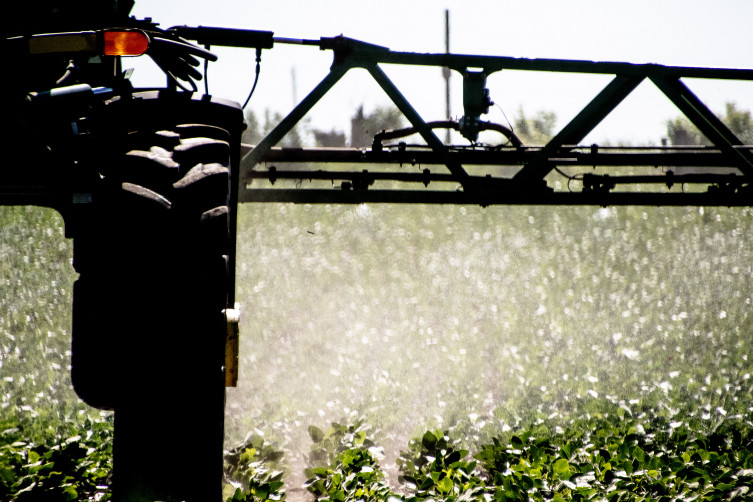 Today, there’s advanced technology to assist Jeremy and other agronomists in deciding what’s best for each field. In fact, these new technologies can help farmers care for their fields down to the square foot. This is known as precision agriculture, and it includes satellite imagery, grid sampling and yield monitoring.
Today, there’s advanced technology to assist Jeremy and other agronomists in deciding what’s best for each field. In fact, these new technologies can help farmers care for their fields down to the square foot. This is known as precision agriculture, and it includes satellite imagery, grid sampling and yield monitoring.
- Satellite imaging is used to identify where you are in the field, as well as what part of a field may need assistance with a pest infestation or invasive weeds. The satellite detects crop health and uses an algorithm to help identify what’s happening in the field, such as where there might be a nutrient deficiency.
- Grid sampling is the procedure of taking samples of the soil, and analyzing the nutrients found within each section. That information is cross-referenced with the needs of the crop, which gives Jeremy an idea of what to suggest for improving yields. This process allows him to identify exactly what is needed on a per-acre basis, sometimes even down to the square foot, to provide all the nutrients to raise a crop in a way that creates a healthy soil and reduces waste and lost revenue.
- Yield monitoring happens during harvest. Special equipment in the combine collects data based on how much is harvested in particular spots in the field. Farmers measure yield based on how many bushels are produced on each acre. For example, a bushel of soybeans weighs 60 pounds and in Kansas, on average, one acre produces 42 bushels of soybeans. Every field is different, so Jeremy compares its yield to prior years along with evaluating other information like soil type, fertilizer inputs, planting populations, hybrids and rainfall to analyze the crop’s performance. This information helps farmers make adjustments for crops and soil management in the future.
Farming involves managing a lot of moving parts, from mechanical maintenance on a variety of farm machinery, to selling crops, making financial decisions, and knowing what is best for each crop throughout every stage of the growing process. Working with an agronomist can help farmers make the best decisions for their plants, so they can focus on the other parts of their business. As you can imagine, the industry is always evolving, so Jeremy does continuing education to stay current and keep his certification as a crop advisor. One thing is for certain, Jeremy’s customers are fortunate to have the advice of the plant doctor.
This article was written by Sage Collins, an intern with the Kansas Soybean Commission.

